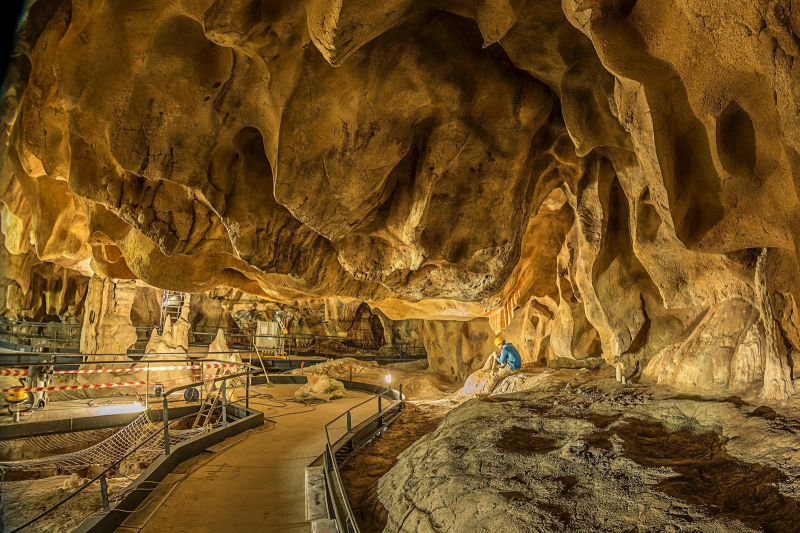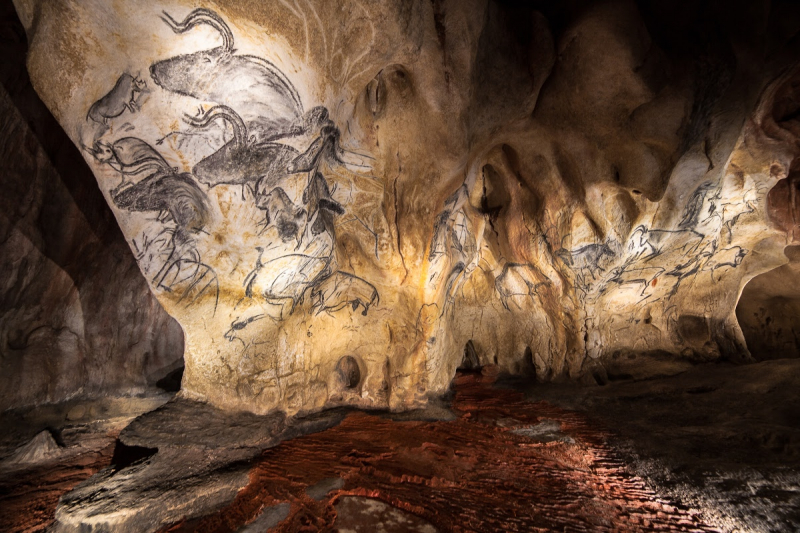Chauvet Cave

The Chauvet-Pont-d'Arc Cave in southeastern France's Ardèche department contains some of the world's best-preserved figurative cave paintings, as well as one of the Most Beautiful Caves in France. It is located in the Gorges de l'Ardèche, near the commune of Vallon-Pont-d'Arc, on a limestone cliff above the former bed of the river Ardèche.
It was discovered on December 18, 1994, and is regarded as one of the most significant prehistoric art sites; on June 22, 2014, the United Nations' cultural agency UNESCO designated it as a World Heritage site. The cave was discovered six months after an aperture now known as "Le Trou de Baba" ("Baba's Hole") was discovered by Michel Rosa by a group of three speleologists: Eliette Brunel-Deschamps, Christian Hillaire, and Jean-Marie Chauvet (Baba). The group returned to the cave at a later date. Michel Chabaud, another member of this group, and two others ventured deeper into the cave and discovered the Gallery of the Lions, also known as the End Chamber. Chauvet's account of the discovery is quite detailed. They discovered fossilized remains, prints, and markings from a variety of animals, some of which are now extinct, in addition to the paintings and other human evidence.
The cave is located above the previous course of the Ardèche prior to the opening of the Pont d'Arc. The Ardèche gorges are home to a plethora of caves, many of which are geologically or archaeologically significant. The cave appears to have been used by humans during two distinct periods, according to radiocarbon dating: the Aurignacian and the Gravettian. The majority of the artwork is from the earlier Aurignacian period (32,000 to 30,000 years ago). The later Gravettian occupation, which took place between 27,000 and 25,000 years ago, left only a child's footprints, the charred remains of ancient hearths, and carbon smoke stains from torches used to light the caves. The footprints could be the oldest human footprints that can be accurately dated. Evidence suggests that after the child's visit to the cave, the cave remained untouched until it was discovered in 1994 due to a landslide that covered its historical entrance. The cave's soft, clay-like floor has cave bear paw prints, as well as large, rounded depressions, thought to be "nests" where the bears slept. There are many fossilized bones, including cave bear skulls and an ibex's horned skull. In this cave, a set of footprints of a young child and a wolf or dog walking side by side were discovered.
Location: Ardèche, France








